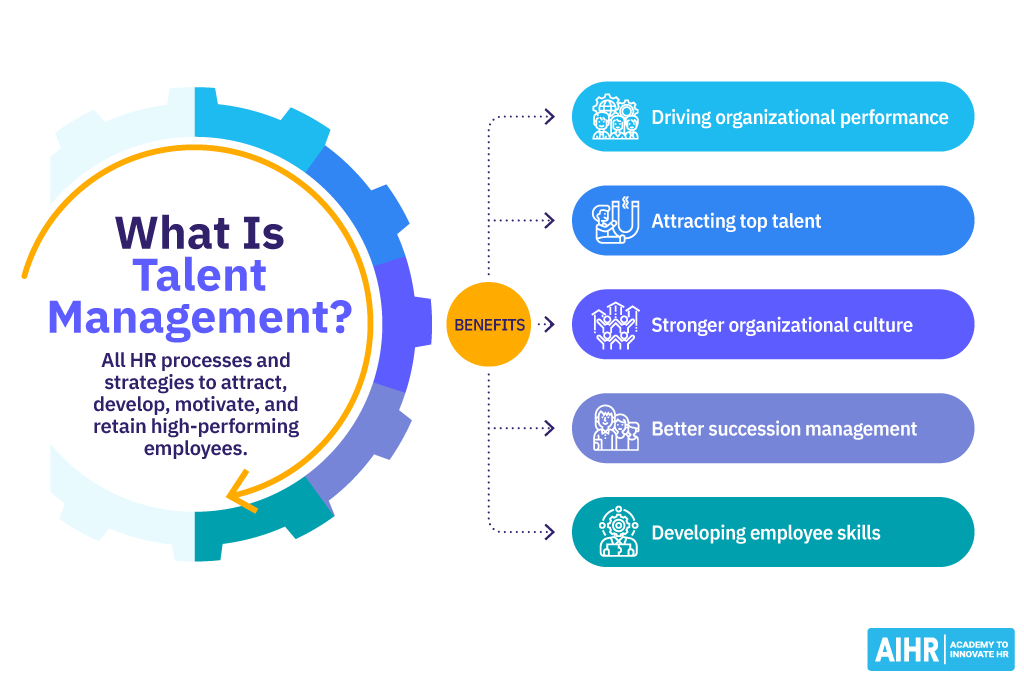
Talent-Management-What-is-Talent-Management (1)
In today’s competitive business landscape, successful organizations understand the imperative of cultivating a skilled workforce to drive growth and innovation. Strategic talent mapping enables companies to align their human resources with long-term business goals. Notably, more firms are leveraging executive search services to identify and groom potential leaders, ensuring they have the right talent in key positions to navigate future challenges effectively. Executive search methods focus on creating a dynamic leadership pipeline, fundamental in a world where market conditions can shift rapidly and decisively. By securing top-tier talent, businesses prepare for foreseeable changes and gain a strategic advantage over competitors by securing leadership that can foster agility and foresight.
Understanding Talent Mapping
Talent mapping is a strategic management process where an organization identifies, evaluates, and explores its current and future workforce needs. This comprehensive approach helps businesses align their talent acquisition strategies with organizational objectives. By assessing the skills and competencies within the organization, leaders can make informed decisions about training, development, and hiring. The ultimate goal is to ensure that the right people are in the right roles at the right time, enhancing operational efficiency and sustained growth. Furthermore, talent mapping provides a roadmap, allowing organizations to visualize talent needs across different departments, anticipate challenges, and allocate resources effectively. This practice supports immediate staffing requirements and prepares the company for future shifts in the industry landscape. As business environments evolve, such agility in planning and implementation can serve as a key differentiator between thriving companies and those that struggle to keep up.
Key Benefits of Talent Mapping
Implementing talent mapping strategies benefits a company’s longevity and success. Firstly, it encourages succession planning by identifying high-potential employees and preparing them for leadership roles. This proactive planning ensures organizational stability during transitions. Secondly, according to recent reports, talent mapping significantly boosts employee retention rates as it fosters a culture of engagement and development. Employees feel valued when they see a clear path for growth within the company, leading to increased loyalty and reduced turnover. Additionally, talent mapping enhances the company’s ability to respond to talent shortages by maintaining a pipeline of qualified candidates ready to step into key roles. This agility allows companies to remain competitive, even in volatile markets, by ensuring they have the human capital needed to capitalize on new opportunities as they arise. These strategies cultivate a resilient and robust workforce ready to meet the demands of an ever-changing business world.
Implementing Talent Mapping in Your Organization
To effectively incorporate talent mapping into your organization, start by conducting a thorough analysis of your current workforce’s skills and capabilities. Regularly update this information to reflect any changes or new developments. Engaging with all stakeholders, including HR professionals and team leaders, is crucial to ensure a holistic understanding of the organization’s talent needs. Collaboratively establish a clear action plan outlining the steps required to fill identified talent gaps and invest in training and development programs to address these shortfalls. Moreover, incorporating feedback loops will allow for continuous improvement of talent strategies. Involving employees in this process can spark novel ideas and approaches to development, encouraging a culture of collective growth and innovation. By bridging strategic planning with day-to-day operations, organizations can create a formidable blueprint that addresses immediate talent needs and anticipates future challenges.
The Role of Data in Effective Talent Mapping
Data plays an integral role in talent mapping. By leveraging analytics, organizations can gain insights into workforce trends, employee performance, and potential areas for improvement. Effective use of data allows companies to make evidence-based decisions and tailor their talent management strategies accordingly. Advanced technologies, such as AI and machine learning, further enhance the predictive accuracy of talent mapping processes. With these tools, businesses can delineate clearer career paths and foster a culture of innovation and agility. Additionally, data analytics can rapidly identify skills gaps, enabling quicker response times to educational and training needs. By using precise data, organizations can better invest in their workforce, targeting specific areas that will yield the greatest return in productivity and engagement. This precision optimizes the current employee skill set and identifies potential in less obvious areas, opening new avenues for talent exploration and development.
Overcoming Challenges in Talent Mapping
Despite its numerous advantages, talent mapping is not without challenges. One major hurdle involves integrating diverse data sources to create a unified talent map. Ensuring data accuracy and consistency is paramount to prevent misleading insights. Additionally, experts recommend that organizations prioritize change management and communication to ensure all employees understand the benefits of talent mapping initiatives. This understanding helps mitigate resistance and encourages active participation in the process. Constantly evaluating and refining the talent mapping process can help circumvent challenges and accommodate organizational changes. Moreover, by fostering an environment open to feedback and adaptation, companies can create a resilient and flexible talent management system that successfully supports their growth objectives. Overcoming these hindrances with agility and foresight equips organizations to maintain a competitive edge and ensures a sustainable trajectory of growth and innovation.
Future Trends in Talent Management
The future of talent management is poised for exciting developments ushered in by technological advancements and evolving workplace dynamics. Agile talent strategies will become a norm, allowing organizations to adapt to market changes swiftly. Moreover, there will be an increased emphasis on diversity and inclusion initiatives within talent mapping frameworks to foster more innovative and competitive work environments. Companies that stay ahead of these trends will attract top talent and retain it, ensuring a sustainable competitive advantage in an ever-evolving marketplace. Integrating mobile and remote workforce solutions will expand talent pools and diversify employee engagement strategies, further enhancing an organization’s capability to adapt quickly and effectively to the fast-changing global landscape. As businesses embrace these changes, they enhance their operational resilience and significantly increase the likelihood of sustainable and scalable growth, positioning themselves as leaders in their respective industries.

